Delve into the consequences of hydropower in Vietnam. Marcel Marchand explores the delicate balance between alternate energy and its impact on communities.
The gentle buzzing of the turbine at the Nam Chien 2 power station created a youthful sensation. Here and there, the hands of pressure gauges, rev counters and other instruments fluttered, as if nervous. The closer we descended, the louder the sound became.
One more stairway and we were face to face with the shiny shaft of the rotor spinning tirelessly in circles. This was the most intimate part of the plant. Clean energy was produced here. This was what it was all about. Above us were measurement and control panels that kept track of the amount of electricity produced. Outside the turbine house were the transformers and insulators that worked invisibly and sent electrons into the national grid. But where did the water come from?
Somewhere hidden deep in the mountain was a large tube. And that tube started upstream, a few miles away, where a large concrete dam blocked the natural passage of the water. It was a nice piece of civil engineering. But everything had its price. The river between the dam and the turbine station had dried up. And that was where the problem lay. How bad was it?
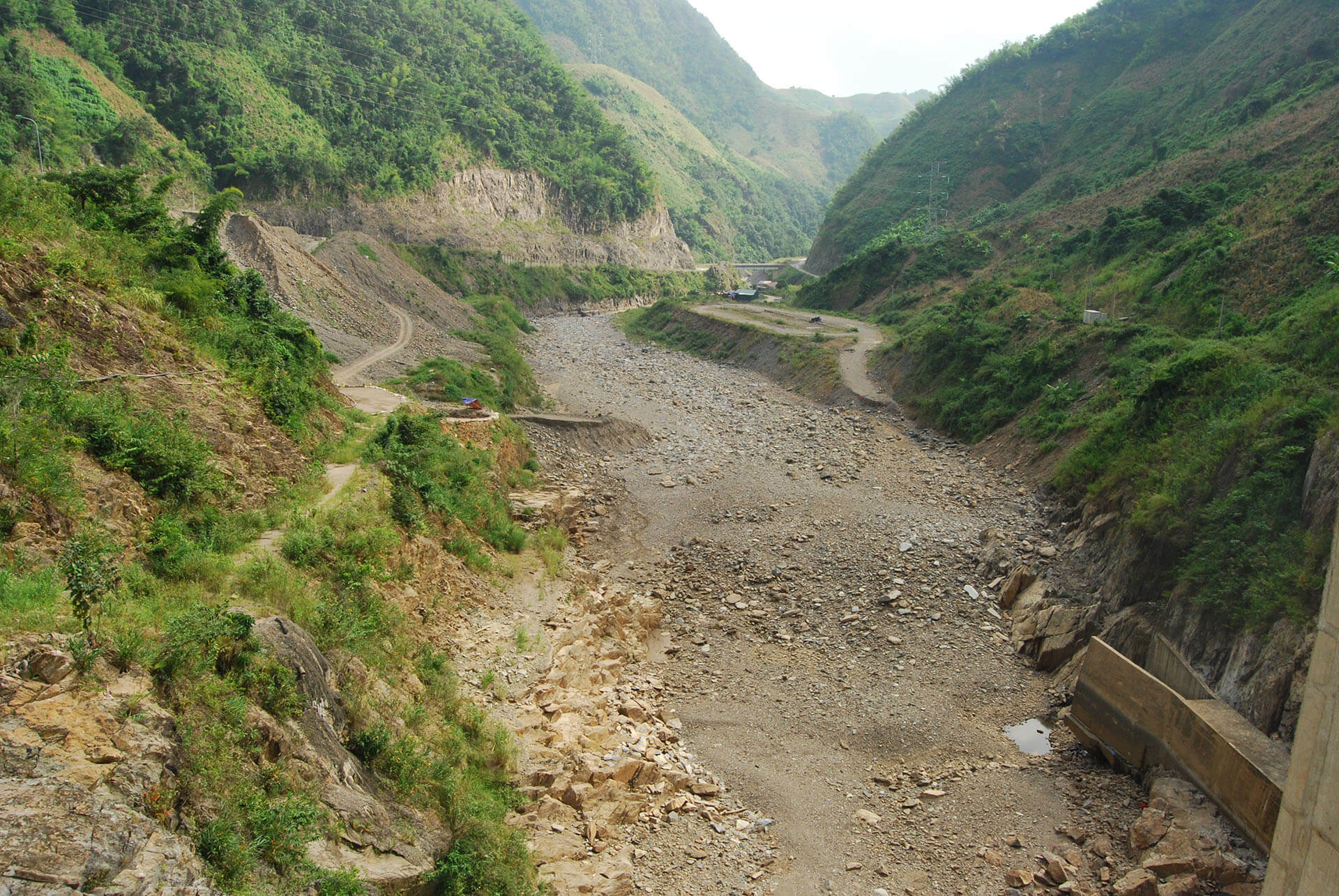
Just like modern windmills, dams do not always enrich the landscape. Some people in Vietnam have a different opinion about that. For example, they believe that the new dam contributes to the beautification of the landscape. Not me. Why change anything in the beautiful landscape of the lower reaches of the Chien River in the mountainous province of Son La in north-western Vietnam?
The swiftly flowing stream had glistened in the sun and made its way between fresh green rice fields. Traditional wooden houses stood on the shore. The laundry drying on the clothes lines had blown in the cool mountain wind. There were sheds full of yellow maize corn. Women with their black hair tied up like a bun had carried children or wicker baskets on their backs.
We were also on a hunt of a different kind. Visiting these small hydropower projects hidden in the mountains. Commissioned by the World Bank to determine the exact consequences of these works. And how the dilemma could be resolved.
Armed with a map and GPS, we roamed river banks, waded through rivers, slithered over muddy roads smoothed by late monsoon rains, rode in the trunk of a hefty truck, surveyed ethnic minorities, scooped sediment samples, stuck probes in muddy and clear water, sampled the fish in local markets, noted down dam dimensions and turbine capacities and photographed degraded landscapes.
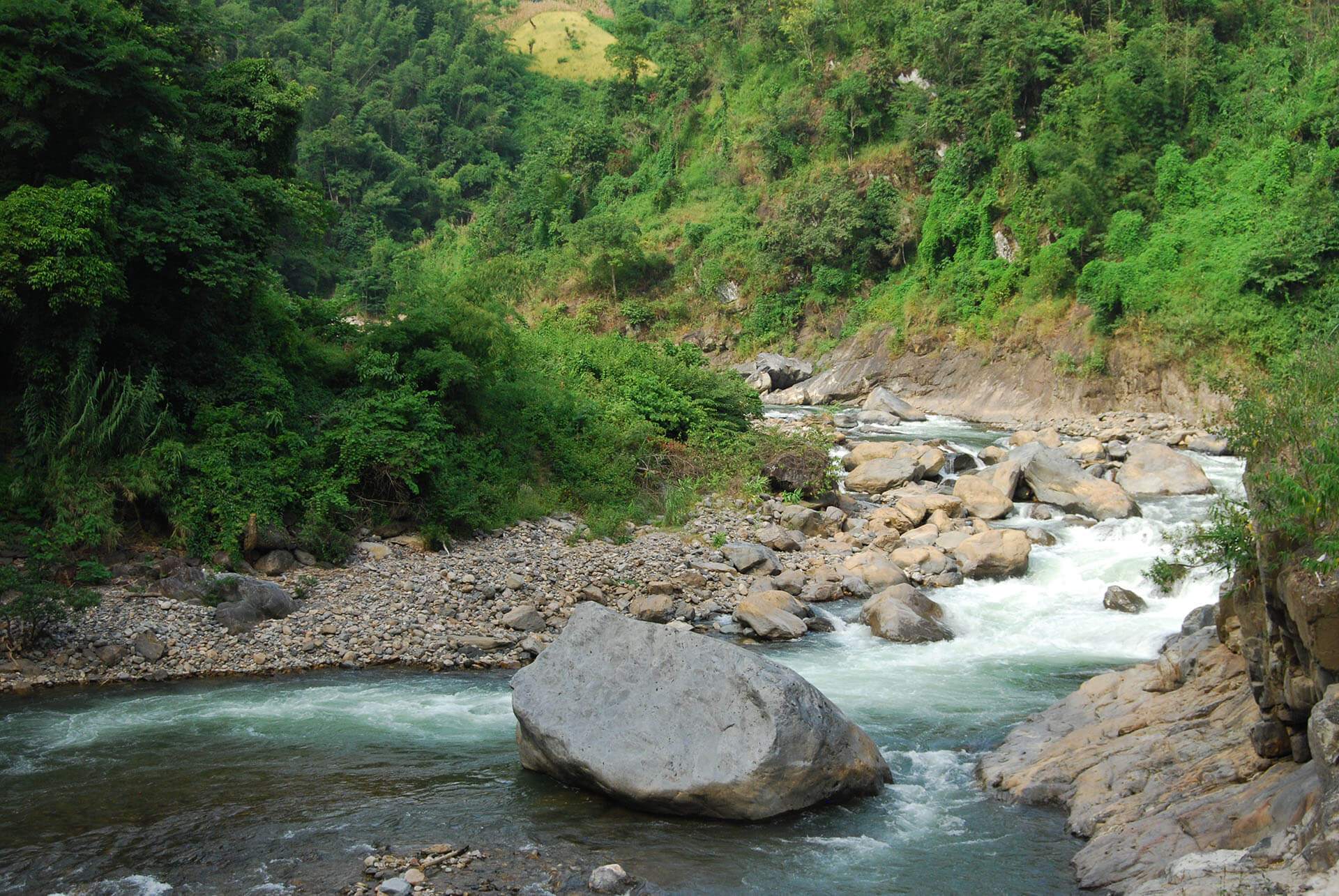
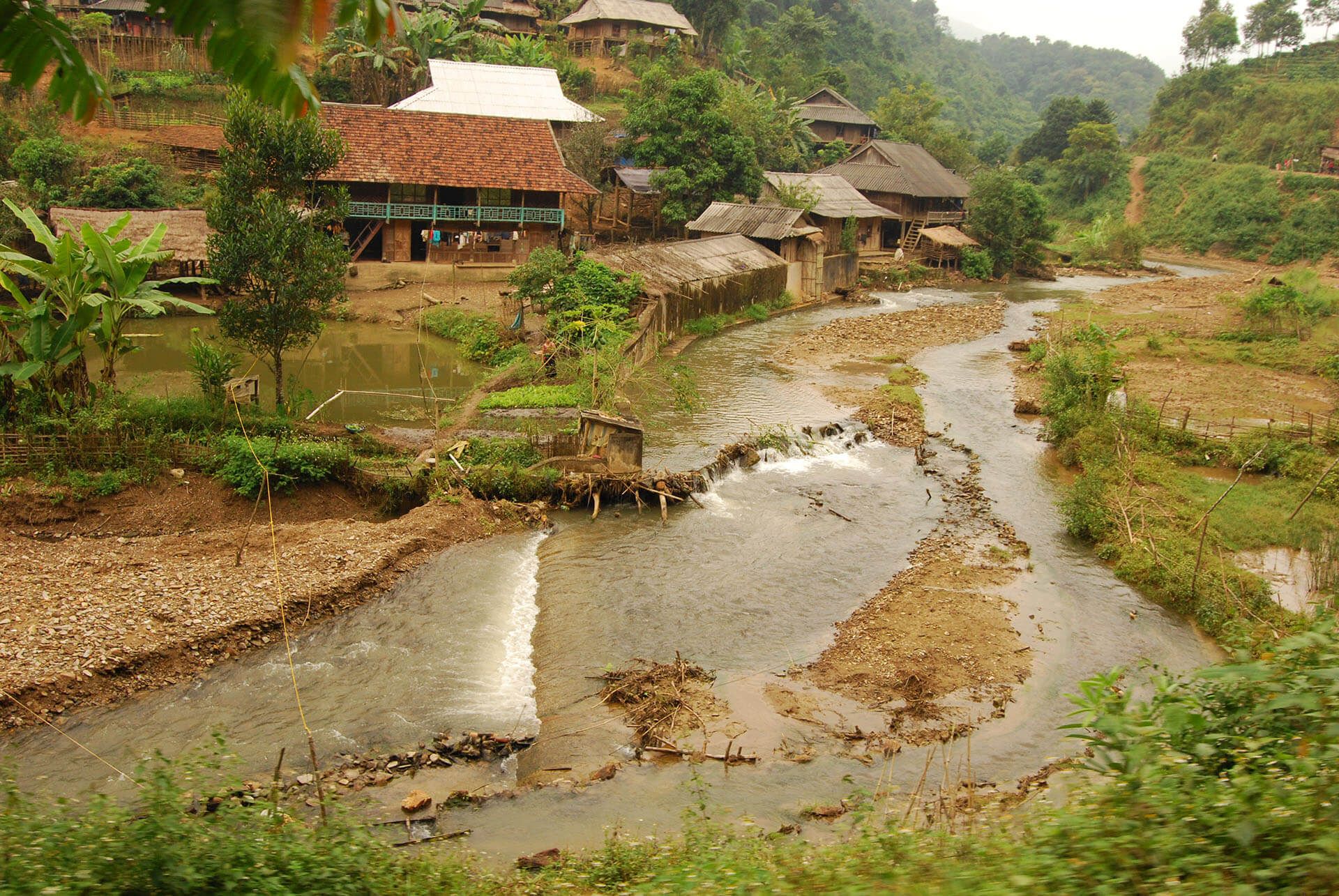
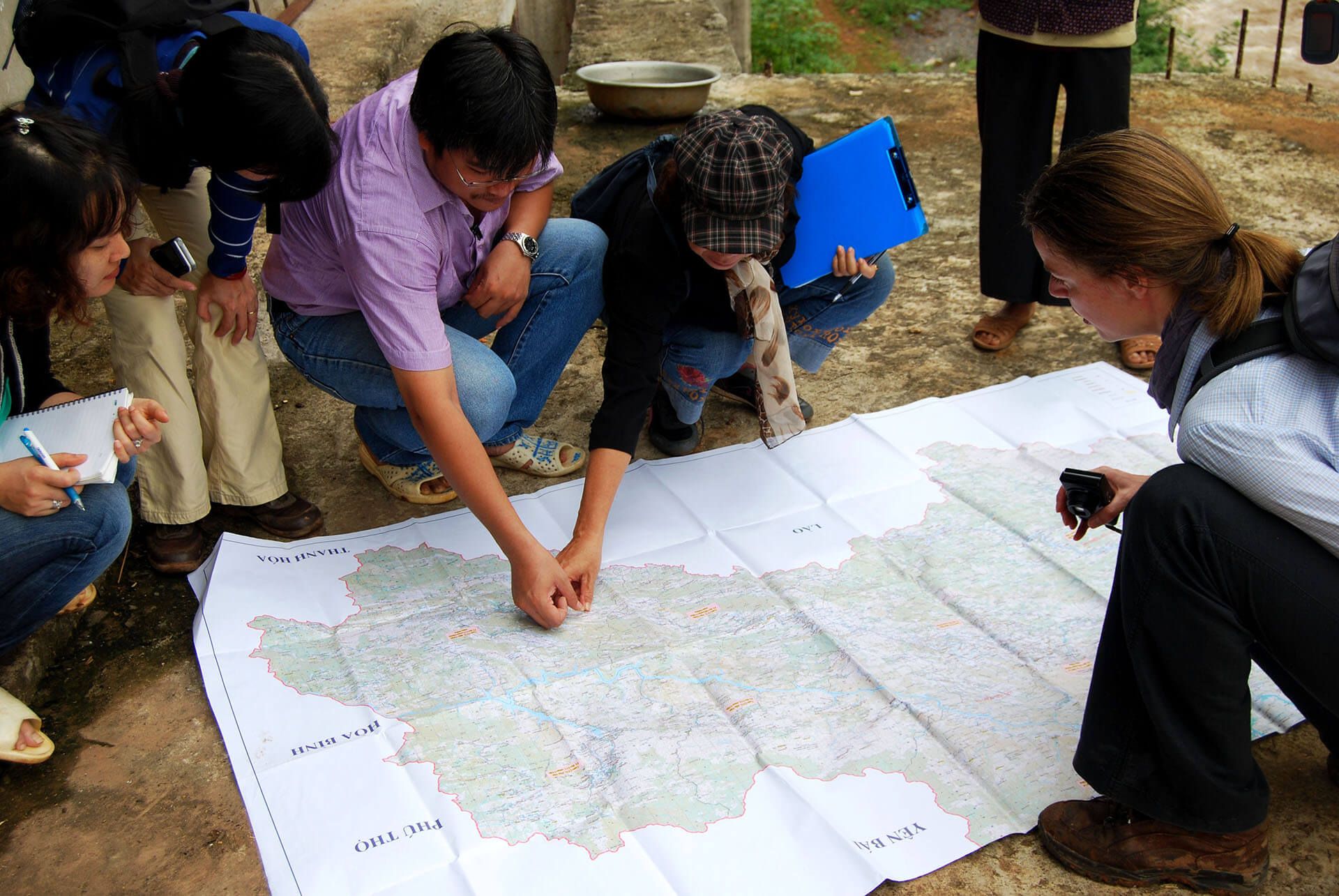
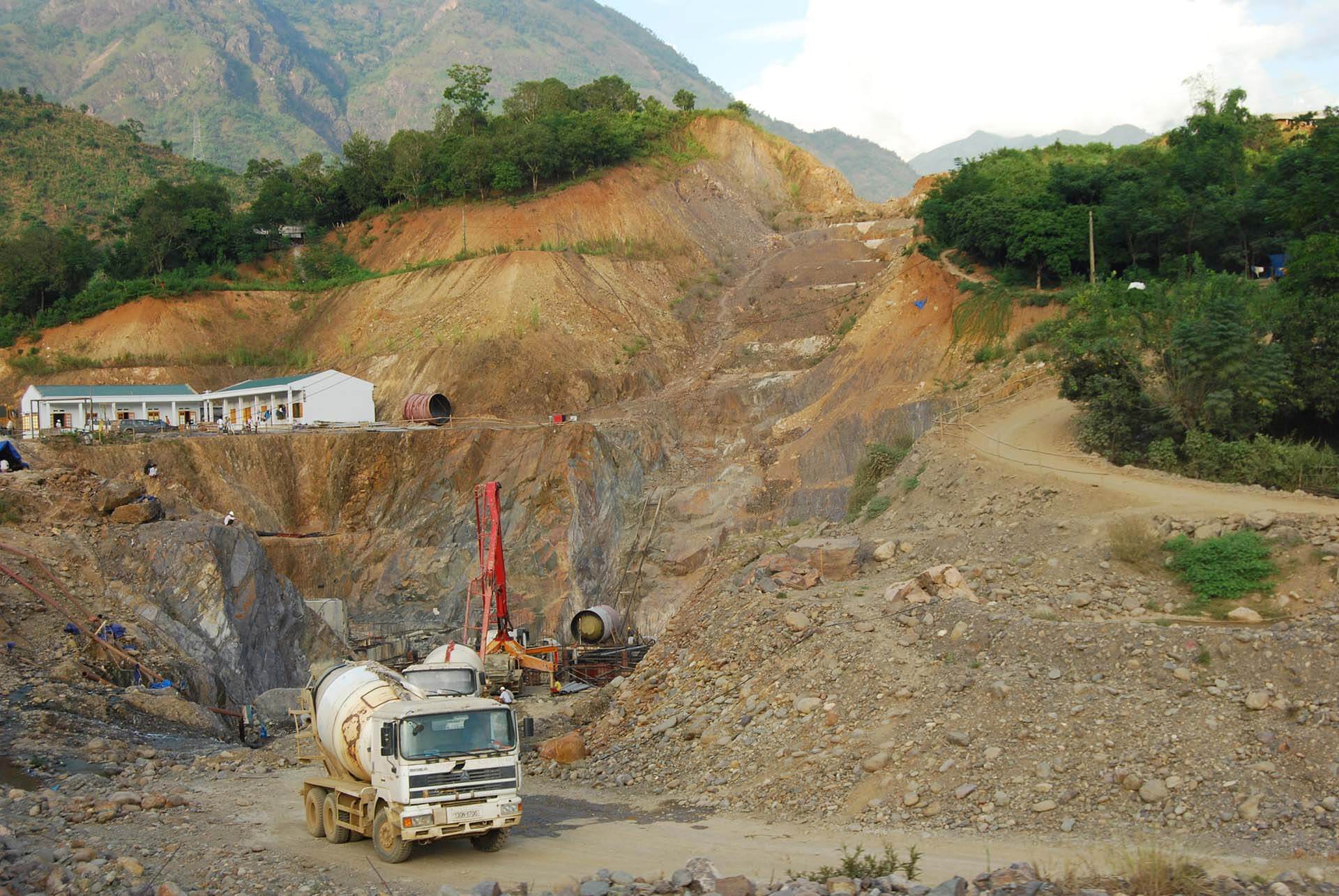
Clockwise from top left: the fresh blue water of the river upstream of the hydropower dam; the serene river meandering through a village; another dam under construction; using a map to explore river banks and determine the precise impacts of dams. Photos: Marcel Marchand
Sometimes we came across unfinished buildings, suddenly abandoned, or so it seemed, by the construction workers. Nature then took over. Creepers crawled over aged concrete, dust and spider webs encapsulated never-used turbines, the intense mountain moisture oxidised steel reinforcement, sheds collapsed under the force of natural elements, and termites did the rest. Constructions discoloured, slowly took over the colour of the landscape and merged with their background. Silent witnesses to the global crisis.
In the meantime, the people there just went on with their life. They harvested the corn from the steepest slopes and the honey from the wooden beehives that had been put together like miniature villages.
While our sociologist conducted an interview, we strolled through the village of Pa Chien and talked with some boys. The conversation ended soon after the first words of school English had been exhausted, and we continued our walk towards the river. Unfortunately, our way had been blocked by a small local stream that ran right through the village, which forced us to go back again.
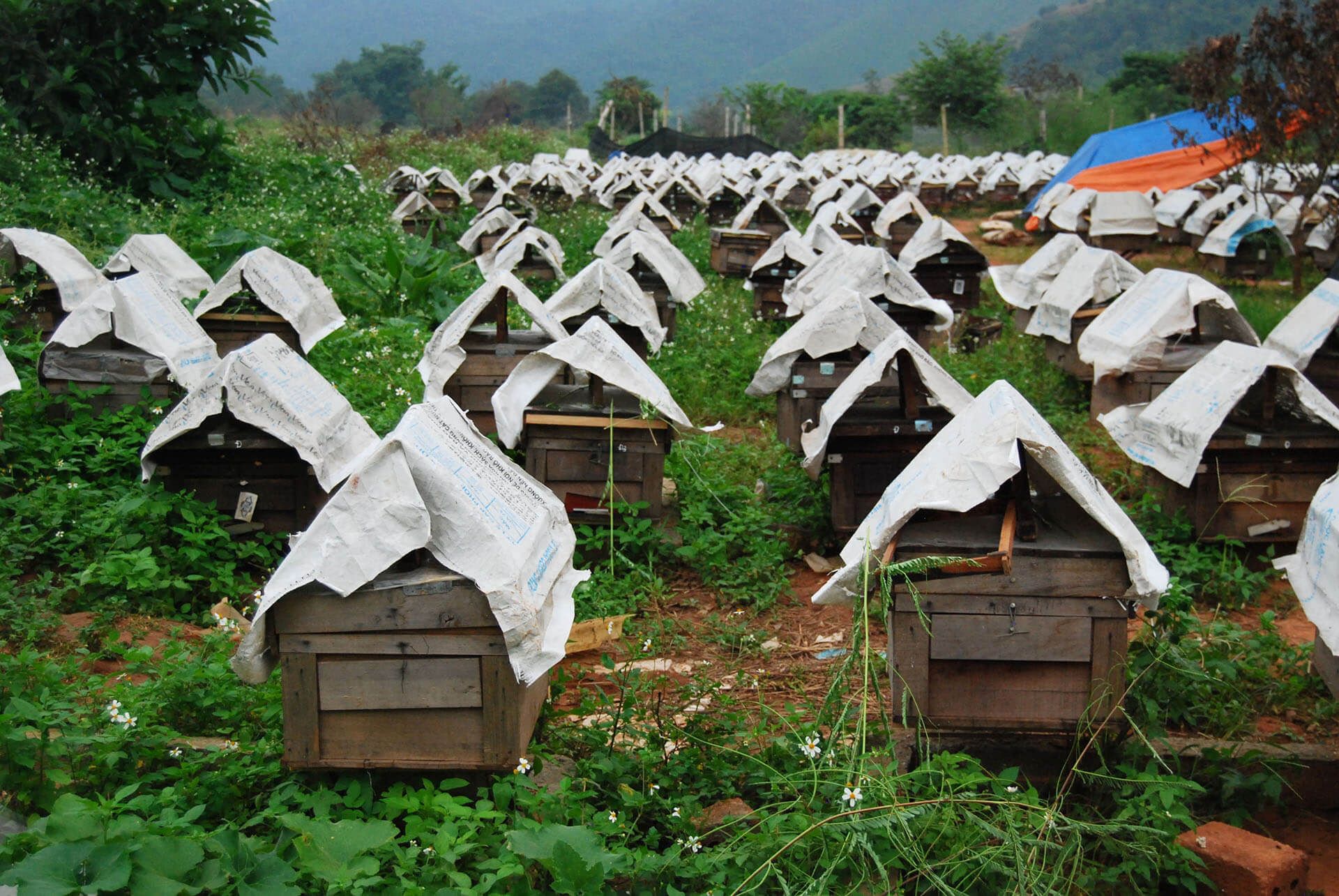
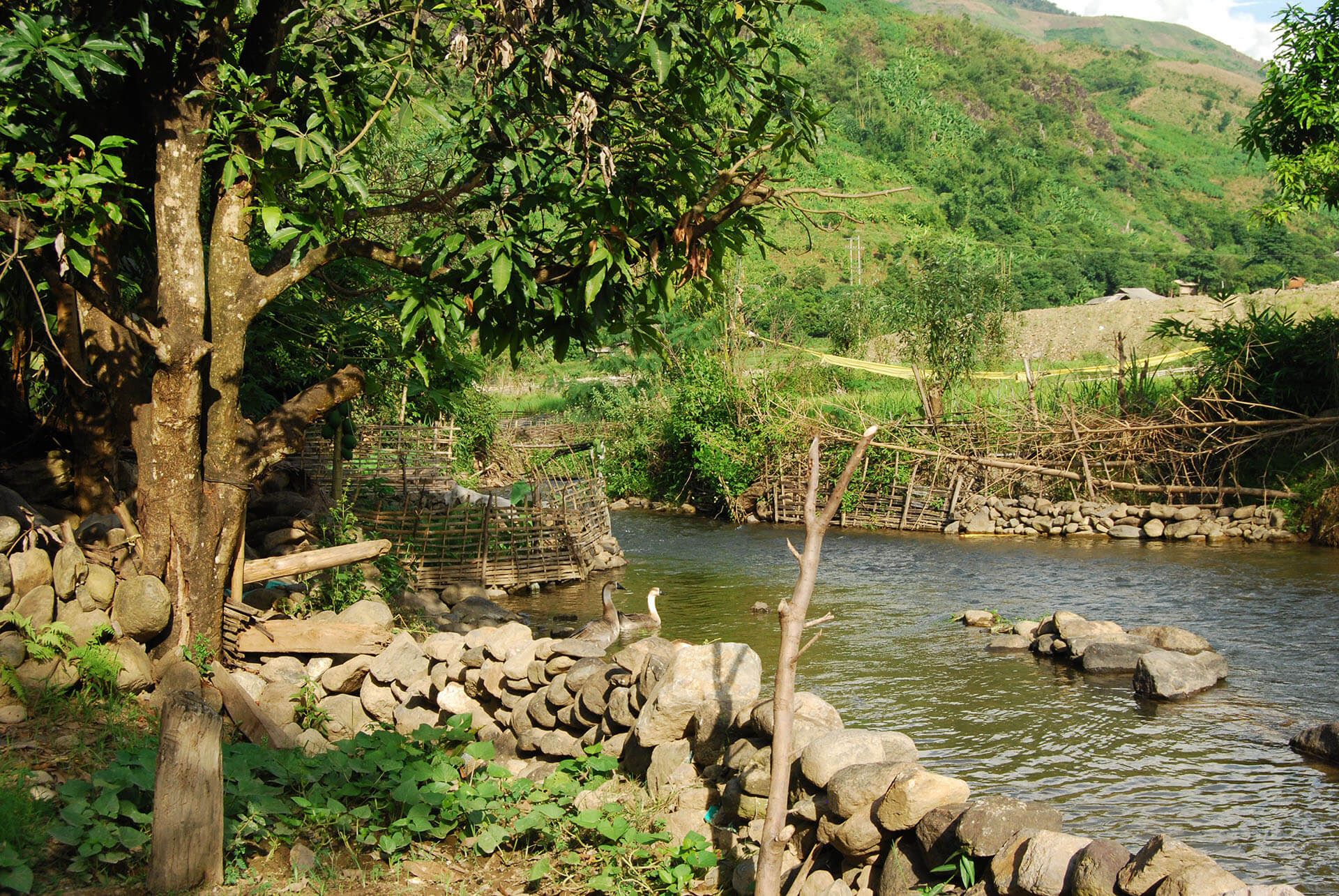
Left: Beehives neatly arranged as in a miniature village. Right: Stones are used to channel the flow of the river inside the village. Photos: Marcel Marchand
But look, our kid friends from just now had not forgotten us! What we had thought was childish play turned out to be entirely at the service of our research. With united forces, they had laid a piece of wood across the water and invited us to continue our way, towards the fast-flowing river. Once there, the toughest of the three started to get rid of his shirt and pants. And before we could worry about the possible danger, he took a dive into the deepest part of the river and disappeared. In an instant, he was dragged many tens of metres downstream and for a moment we feared for his wellbeing.
But behold, he came up again and swam easily to the shore. The other boy also knew the trick and followed his friend. Wasn't it great to have such a wild watercourse behind your house? But for how long?
Soon it would be possible to build a swimming paradise in Hanoi. With running water powered by the electricity produced at Pa Chien. There the city boys could be nice and tough. Just like jumping into a mountain stream.
Back in Hanoi, I washed the dust from my hair with a nice hot shower. Running water, thanks partly to the same dams. Carbon-neutral, yes, but it also felt a bit uncomfortable, remembering the impact that I had just witnessed.
Marcel Marchand wrote this story while on an assessment visit for the World Bank.






